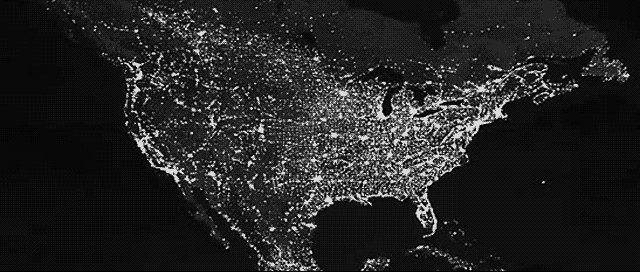By: Benjamin Weingarten
TheBlaze
In light of nuclear negotiations with Iran, the general conflagration in the Middle East, Russia’s march and a whole host of other chaotic situations worldwide, recently we sat down with an expert on national security, foreign policy and in particular nuclear proliferation, John Wohlstetter, to discuss the gravest threats to the American homeland.
Wohlstetter, a senior fellow at the Discovery Institute and London Center for Policy Research, two conservative think tanks, recently released an updated edition of his book on this very topic, “Sleepwalking With the Bomb,” and delivered a speech earlier in January titled “Rethinking the Unthinkable Why Failures of Imagination, Projection, and Strategy Court Nuclear Catastrophe” that piqued our interest.
During our interview with Wohlstetter, we had the chance to ask a very basic set of questions about what is potentially the most devastating of all weapons that could be launched at the market homeland: Electromagnetic pulse (EMP). Wohlstetter’s five minute primer, which you can find below, covers (i) What exactly an EMP is, (ii) How much damage it could cause in a worst case scenario and (iii) How an EMP attack might transpire:
What would the doomsday scenario of an EMP attack against an America whose infrastructure is not currently protected look like?
In a worst case scenario the detonation would be over Dorothy’s Kansas, in the center of the country. And at 300 miles altitude, you would have a circle, 360 degrees, with a radius of 1,470 miles…that covers the continental United States lower 48 states.
And in a worst case, you could see within a year 90% of the population die, as you don’t have electric power, nothing works, you can’t even get food to market. It would be catastrophic beyond belief.
And if you do it over the Eastern seaboard, you could center an explosion at a lower altitude, say 20-30 miles up over Pennsylvania. And you would cover about, if you centered it there…375 miles…And what you would do with that is take down the Eastern interconnection which supplies 70% of the country’s electric power.
Given that our infrastructure is not protected against this attack today — an infrastructure that Wohlstetter argues could be hardened for a figure of around $10 billion — are there at least contingency plans in place?
If the Congressional panel that looked at it was correct, in a worst case…you could see 90 percent or 100 percent of the network taken out. And if that happens, you can’t recover. It’s not like out of a disaster like a hurricane where you have edge recovery — communities that bring in supplies, rebuild for you, house people who have been displaced as happened after Katrina for example. You don’t have that edge recovery. In the case of the network, there are some transformers in big systems that take several years when you order them to bring them in and put them online. And…at least on what is know publicly, we do not have an adequate supply [of them]. [Link ours]
During the interview, which you can find below, we also had the chance to discuss several other critical topics including:
- The biggest threat to American national security today
- Why the nature of the threat of a nuclear weapon is far more worrying today than during the Cold War
- The knock-on effects of a nuclear Iran
- The strength (or lack thereof) of America’s missile defense system
- How an EMP could be launched above the U.S.
- Why the concept of mirror imaging is essential to understanding America’s foreign policy failures
- And much more
Note: The link to the book in this post will give you an option to elect to donate a percentage of the proceeds from the sale to a charity of your choice. Mercury One, the charity founded by TheBlaze’s Glenn Beck, is one of the options. Donations to Mercury One go towards efforts such as disaster relief, support for education, support for Israel and support for veterans and our military. You can read more about Amazon Smile and Mercury One here.


















